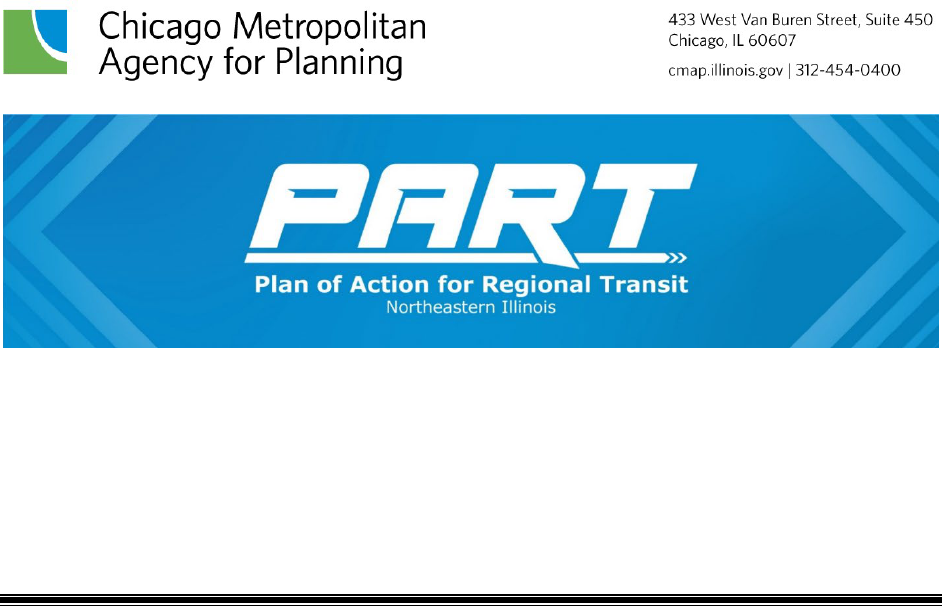
C4: Regional roadway-generated transportation
funding for transit
September 26, 2023
Executive summary
• Dedicating a portion of new or increased roadway-generated revenues to transit is a
potential solution to address structural operating budget challenges.
• Shifting roadway-generated revenues to transit aligns with ON TO 2050’s congestion
management goals and the plan’s call to match the costs of the transportation system to
those who benefit from its use. ON TO 2050 also aims to incentive transit use and grow
ridership. By making strategic investments in the transit system, the region can provide
substantial co-benefits to roadway users by lessening congestion and support
greenhouse gas reduction in the region.
• Some of the road revenues identified could be useful to meet transit’s imminent fiscal
cliff but should not (or cannot) be part of a long-term solution. Other, more durable
sources make sense as part of an overall transit funding structure wherein
transportation revenues are a primary resource for addressing transportation needs.
• Roadway-generated revenues can not only provide additional funds for transit, but also
incentivize more people to switch from driving to transit, thereby increasing ridership
and supporting climate goals.
• The RTA Act currently provides the RTA with the powers to levy either a regional sales
tax or select regional transportation fees (such as a motor fuel tax) to support transit.
Any decision to use roadway-generated revenues to support transit would require the
Illinois General Assembly (ILGA) to amend the RTA Act to allow the use of multiple or
new revenue mechanisms.
• To use tolling or cordon pricing to fund transit, the ILGA would need to authorize
implementation.
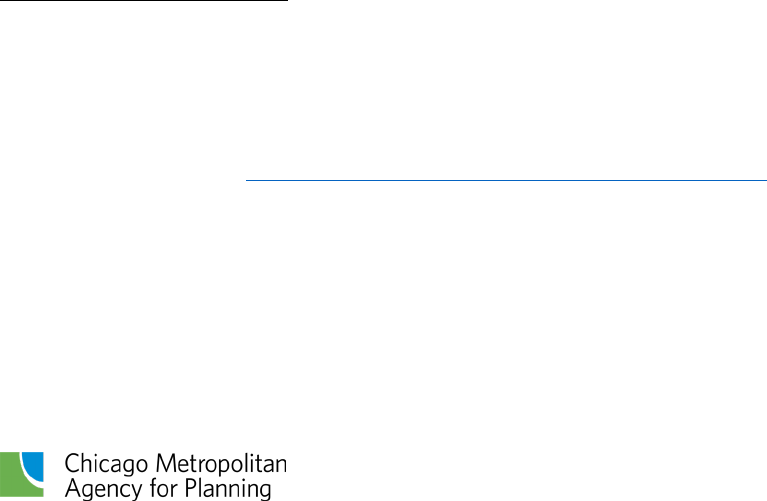
PART recommendations on
Page 2 of 24 roadway-generated revenues
• There is a strong connection between parking and transit, particularly in transit-rich
areas. Commercial parking taxes are already imposed by various jurisdictions in the
region, and an increased fee could be dedicated to fund transit.
Overview of roadway-generated transportation
revenues
Transportation funding in northeastern Illinois is generated from a variety of sources, including
federal, state, local, and system-generated revenues. Funds are used to construct, operate,
administer, and maintain the current roadway and transit system, as well as improve and
enhance the system to meet present-day and future transportation needs. Within the larger
transportation funding process, roadway-generated revenues are those funds created by
imposing fees to use roadway assets or to own and operate vehicles.
In Illinois, the main roadway-generated transportation revenues are the state motor fuel tax
(MFT) and state motor vehicle registration fees.
a
These revenues are principally used to support
transportation capital investments in the state. Other roadway-generated transportation fees
collected in Illinois include parking taxes on commercial garages and tolls collected on Illinois
Tollway assets.
b
Motor Fuel Tax
In 2022, the state collected $2.5 billion in gross MFT revenues.
c
After deductions for specific
transportation-related funds (i.e., Grade Crossing Protection Fund) and operating funds for the
Illinois Department of Transportation (IDOT), as well as allocations to other state departments
(i.e., Illinois Environmental Protection Agency), most net MFT revenues are allocated to
counties, local governments, and IDOT’s Road Fund and State Construction Account. Following
reforms in 2019, a small portion of MFT funds is now allocated to the RTA and the Downstate
a
Motor fuel taxes and registration fees are also levied by counties, townships, and municipalities to support local
transportation needs, but these have been excluded from this discussion.
b
Other transportation fees that have been excluded from consideration at this time include automobile renting
taxes (ARTs) and fees on transportation network companies (TNCs). Although the RTA Act provides the RTA with
the power to impose an ART, the service of renting automobiles will be captured in recommendations to expand
the sales tax base to include additional services. For a discussion of these recommendations, see the companion
memo on the PART webpage (https://www.cmap.illinois.gov/programs/regional-transit-action
). Also, while the
City of Chicago taxes TNC rides, there are challenges to scaling up a TNC fee further. First, TNC data is proprietary
and largely unavailable for most of the region. Stronger data sharing requirements for TNCs and similar private
transportation providers are needed to better understand and manage their activity. Second, the private funding
model behind these companies traditionally works to offset the true costs of transportation for consumers. Given
that the pandemic has changed market conditions for TNCs, and more of these costs are being pushed to
consumers, it has become unclear how reliable a fee on TNCs would be for the transit system.
c
MFT collection and allotment statistics are provided for December 1st through November 30
th
of the following
year. 2022 figures are the most recent annual figures available, and reflect collections and allocations from
December 1, 2021, to November 30, 2022.
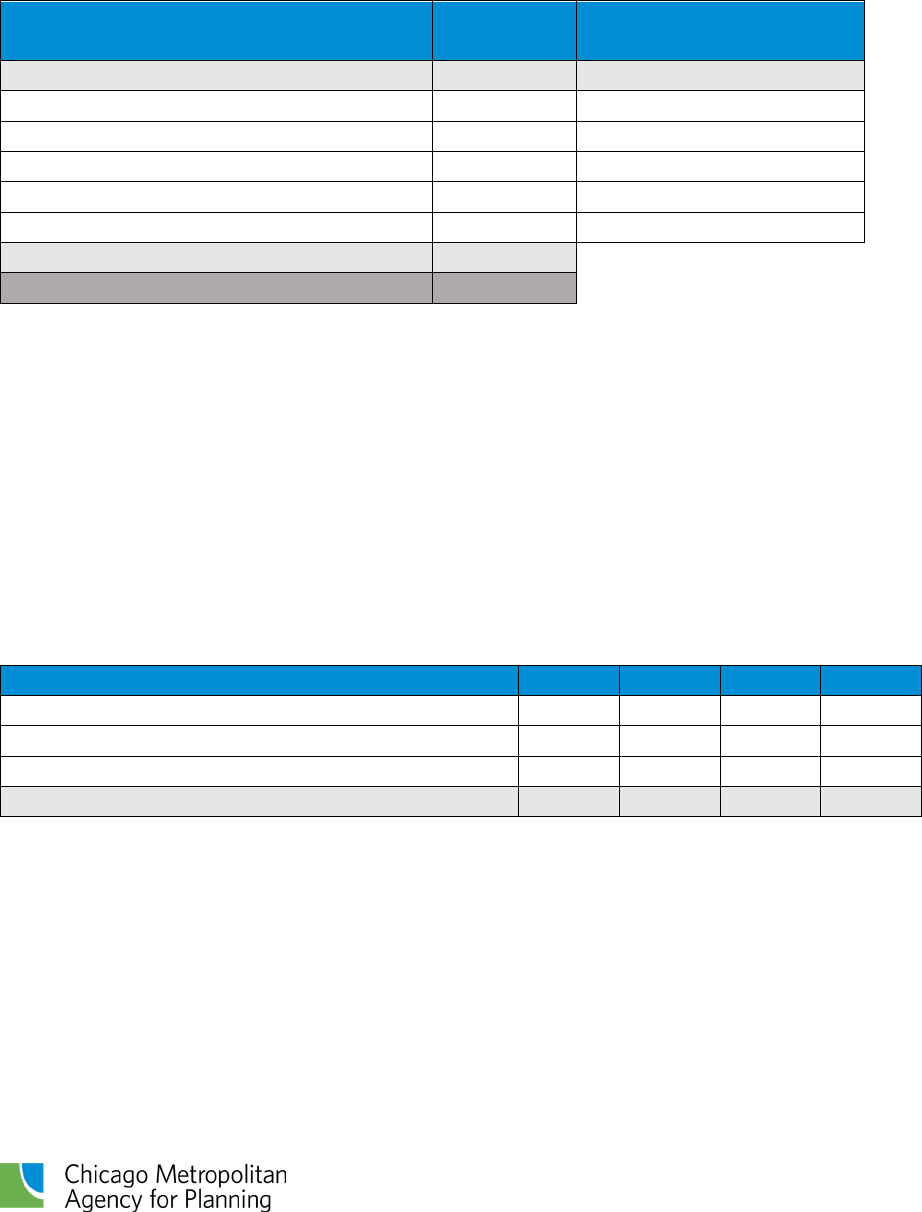
PART recommendations on
Page 3 of 24 roadway-generated revenues
Mass Transit District for capital improvements (Table 1). The Road Fund and State Construction
Account principally support roadway-related investment activities across Illinois, while transit
capital improvement funds support transit-related capital investments in their respective
regions.
Table 1: Illinois Motor Fuel Tax deductions & allocations, 2022
Fund category
Figures
(in millions)
Allocated funds as a
percent of net collections
Total funds for allocation
$2,179.8
100%
Road Fund & State Construction Account
$1,023.3
46.9%
County & local governments
$912.0
41.8%
Transit capital improvement funds
$244.5
11.2%
Regional Transit Authority
$220.1
10.1%
Downstate Mass Transit District
$24.5
1.1%
Total deductions
$288.1
Gross collections
$2,467.9
Source: CMAP analysis of IDOT data
Motor vehicle registration fees
In fiscal year 2023 (FY23), the state collected $1.6 billion from motor vehicle and operator’s
license fees. These fees, which include driver license fees, personalized and specialty license
plate fees, and motor vehicle registration fees, are deposited into the Road Fund to directly
support roadway capital projects across the state. On average, between fiscal year 2020 and
2023, motor vehicle registration fees and electric vehicle surcharge fees respectively
contributed $18.5 million and $9.2 million annually (Table 2).
Table 2: Illinois motor vehicle registration fee revenues, fiscal years 2020-2023
Revenue source (in millions)
FY2020
FY2021
FY2022
FY2023
Vehicle registration fee
$17.2
$20.0
$18.4
$18.0
Vehicle registration surcharge on electric vehicles
$8.6
$10.0
$9.2
$9.0
Registration title transfer fee
$12.4
$12.2
$10.3
$9.5
Total vehicle registration fees
$38.3
$42.2
$37.9
$36.5
Source: CMAP analysis of Illinois Comptroller data
Commercial parking taxes
The State of Illinois, Cook County, and the City of Chicago all currently impose a tax on
commercial parking lots and garages within their respective geographies. The state and Cook
County charge 6-9 percent of the parking cost depending on whether the parking is paid on a
daily, weekly, or monthly basis.
1
Meanwhile, the City of Chicago parking tax rate is 22 percent
for weekday parking, including weekly or monthly passes, and 20 percent for weekend
parking.
2
While many communities in the region can directly impose fees on public parking

PART recommendations on
Page 4 of 24 roadway-generated revenues
spaces, the City of Chicago’s long-term lease agreement with Chicago Parking LLC precludes
them from adding any surcharges to the price charged by the private operator of the city’s
public street parking. Therefore, Chicago’s parking tax on commercial garages is the main
mechanism the city possesses to collect revenues from parking moving forward. In 2019, the
tax generated $144 million for Chicago. Although revenues dropped to $65 million during the
height of the pandemic (in 2020), revenues from the city’s commercial parking tax are
projected to be $136 million in 2023 (94 percent of the pre-pandemic level).
Illinois Tollway tolls
The Illinois Toll Highway Authority (the “Illinois Tollway” or “Tollway”) is self-funded using
revenue from tolls which constitute the transportation fees levied on vehicles using the nearly
300-mile, 12-county tollway system that spans portions of Interstates 80, 88, 90, 294, and 355.
Tolls are levied based on vehicle type (passenger or commercial) and the number of axles. The
revenues primarily support maintenance and operation of the Tollway system’s infrastructure
via direct expenditures, debt service payments on revenue bonds used to fund system
expansion, system reconstruction and improvements, and contributions to capital investment
accounts. In fiscal year 2019 (FY19), tolls generated $1.46 billion in revenues for the Tollway.
Despite a decline in 2020, toll revenues are projected to be $1.52 billion in FY23.
Recommendation: Leverage roadway-generated
revenues for transit
The current transit operating funding crisis does not exist in a vacuum. Statewide and regional
transportation systems are also facing significant challenges; decades of underinvestment have
created a significant backlog of capital projects. As a result, poor roadway and transit system
conditions continue to be a primary driver of capital needs and expenditures across Illinois and
the Chicago metropolitan region. Rebuild Illinois directed some incremental revenues to transit
capital projects — which has helped provide system enhancements and prevent the capital
backlog from growing — but significant transit capital needs remain. Despite this progress,
nearly all the roadway-generated revenues outlined above are currently directed to roadway
projects.
A strong and well-operated transit system benefits roadway users and advances state and
regional multimodal strategies to improve mobility, regional economic competitiveness, climate
resilience, and overall quality of life. New and existing roadway-generated revenues present
opportunities to provide greater support to transit, and to ensure transportation revenues are a
primary resource for addressing transportation needs.
To better support the state and region’s multimodal goals, several opportunities exist to
leverage roadway-generated revenues to support transit needs in northeastern Illinois. Some of
the road revenues identified could be useful to meet transit’s imminent fiscal cliff but should
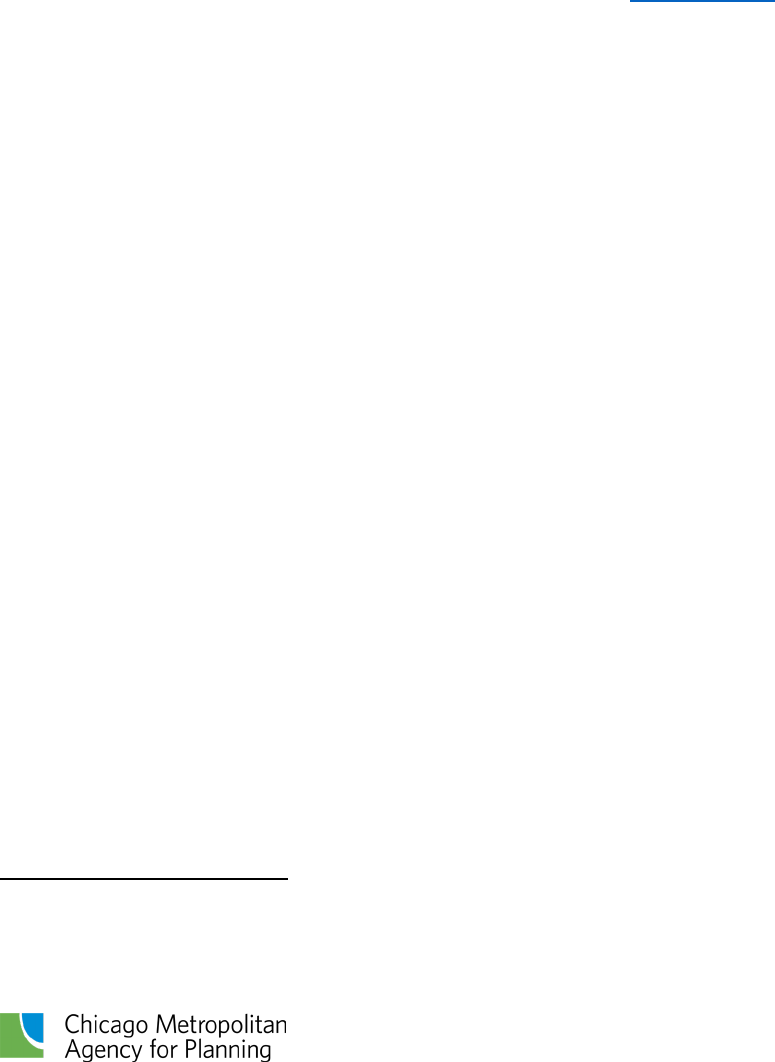
PART recommendations on
Page 5 of 24 roadway-generated revenues
not (or cannot) be part of a long-term solution (see below, Option 1). Other, more durable
sources make sense as part of the overall transit funding structure (Options 2-6). Given the
clear nexus between roadway and transit systems (i.e., congestion management, greenhouse
gas emission mitigation), road revenues can and should provide solutions to a range of regional
transportation issues.
Road revenue options for transit
The following options for road revenues in northeastern Illinois are based on expanding or
adjusting existing transportation user fees (for transportation revenue options pertaining to
federal or state capital funds, see the companion memos on the PART webpage).
3
In addition to the policy rationale behind matching transportation user fees with the costs of
the transportation system, these options align with guidance around the Illinois Transportation
Taxes and Fees Lockbox Amendment (the “Transportation Lockbox Amendment”), which states
that any taxes or fees collected in relation to the transportation system can only be used to
fund transportation costs.
d
Although thoughts may differ over the specific use of these
resources and their role in supporting either annual transit operations or transit capital
investments, the sources discussed below lack any inherent restrictions that preclude one use
over the other. As such, this memo discusses funding options in the context of the overall PART
focus on operating funding for transit.
4
Future work will be needed to determine how specific
funding sources should be aligned with specific uses.
• Option 1: Impose a motor fuel tax surcharge in the RTA region and dedicate the new
funds to transit. This will require the ILGA to amend the RTA Act provision that
precludes the use of a regional transit motor fuel tax alongside the existing RTA sales
tax.
• Option 2: Impose a vehicle registration fee surcharge in the RTA region and dedicate
the incremental revenues to transit.
• Option 3: Increase existing commercial parking taxes and dedicate the additional
revenue to transit.
• Option 4: Increase existing Illinois Tollway tolls and dedicate a portion of the increment
to transit.
• Option 5: Add new tolls on currently un-tolled IDOT expressways and dedicate a
portion of the increment to transit.
• Option 6: Implement cordon pricing around the Chicago central business district.
d
The Transportation Lockbox Amendment was passed via state ballot measure in 2016. The legality of the
amendment was later affirmed in 2022 when the Illinois Supreme Court ruled on Illinois Road and Transportation
Builders Association et al. v. the County of Cook.

PART recommendations on
Page 6 of 24 roadway-generated revenues
Option 1: Impose a MFT surcharge in the RTA region for
transit.
The MFT is a critical piece of the state’s transportation funding strategy. However,
improvements to vehicle fuel efficiency and the uptake of electric vehicles (EVs) are increasingly
eroding the MFT’s sustainability as a revenue source. The ILGA began addressing this dynamic
in 2019 with the passage of Rebuild Illinois, the state’s most recent capital investment program.
Rebuild Illinois included changes to the MFT and provided MFT revenues to support transit
capital expenditures. Specifically, the program doubled the base MFT rate to 38.0 cents per
gallon, tied future annual increases of the rate to inflation, and directed incremental MFT
revenues to a newly established Transportation Renewal Fund (TRF). The TRF provides capital
funds for state and local transportation investments like previous funding structures, as well as
the newly established Regional Transportation Authority and Downstate Mass Transit District
capital improvement funds.
Despite these changes, the existing state MFT does not fund transit operations. Imposing a MFT
surcharge within the RTA region could provide a secure, dedicated revenue source for
additional transit capital investments and/or transit operations. CMAP estimates that every
additional $0.05 per gallon surcharge imposed in the RTA region is estimated to generate an
additional $135 million in annual revenues.
A MFT surcharge could be implemented in the RTA region quickly using the RTA’s taxing
authority and existing MFT collection mechanisms. However, improvements to vehicle fuel
efficiency (including growing uptake of electric vehicles) and anticipated changes in travel
behavior are expected to continue eroding MFT revenues over time. In fact, statewide MFT
revenues are only projected to continue growing due to the now-indexed rate and analytical
assumptions that vehicle miles travel will continue to increase indefinitely. MFT revenues are
also unlikely to keep pace with transportation costs, which persistently grow at a faster rate
than inflation. Other revenue tools will ultimately be needed to replace the MFT and support
the transportation system, such as a road usage charge or a vehicle miles traveled tax.
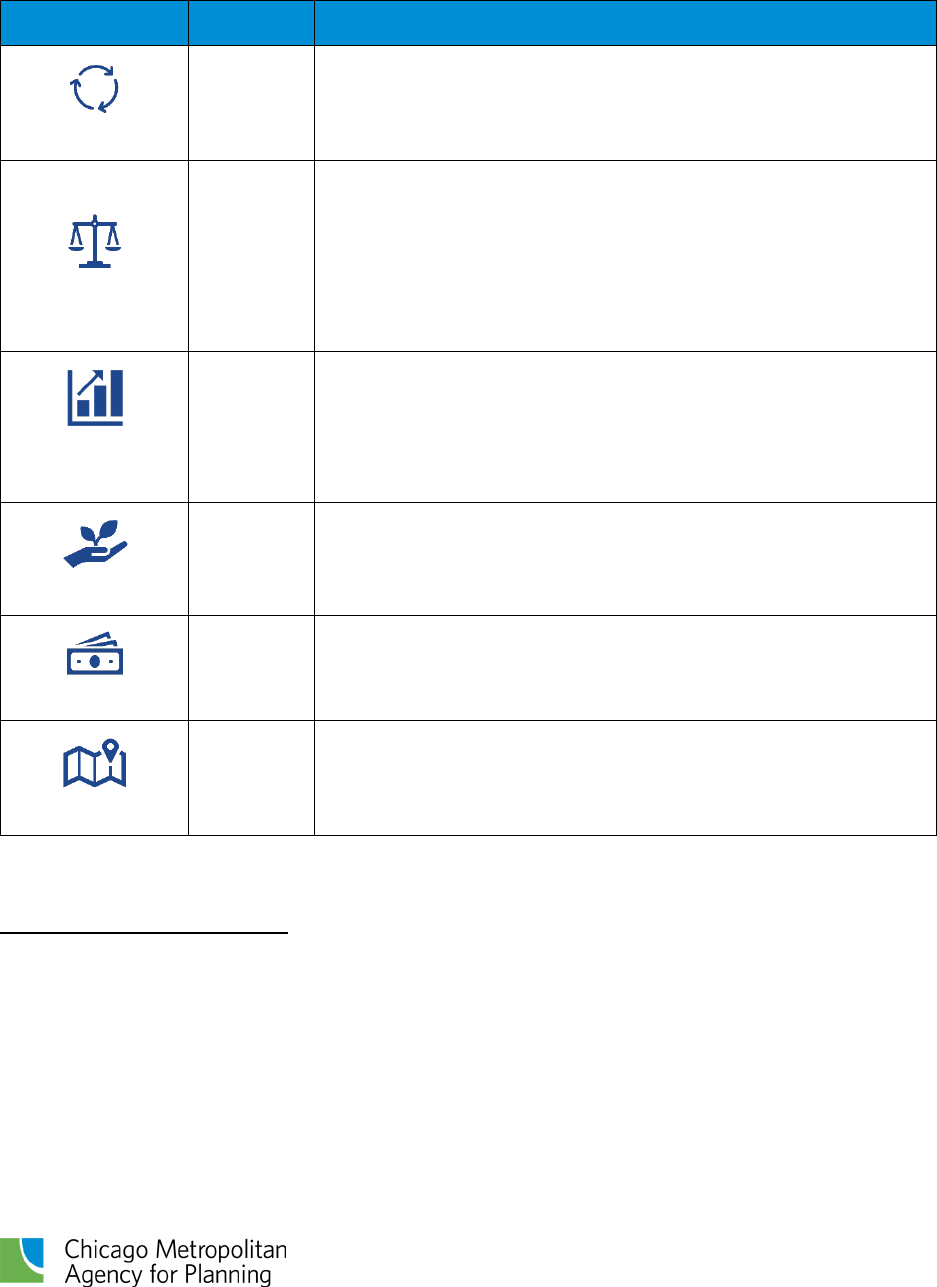
PART recommendations on
Page 7 of 24 roadway-generated revenues
Evaluation
e
Policy
Category
Rating
Rationale
Mobility
Medium
Increasing vehicle fuel costs in the RTA region could
encourage mode shift to transit and thereby reduce
congestion.
Equity
Low
The MFT is a factor of vehicle fuel efficiency and is therefore
more regressive than other road fees based only on miles
traveled. Charging a MFT surcharge, regardless of ability to
pay, places a greater cost burden on vulnerable populations
that drive in the region, who are more likely to have older,
less fuel-efficient vehicles.
Revenue
sustainability
Low
MFT revenues are eroding due to improving fuel efficiency
and fleet electrification. This is not a sustainable funding
solution in the long-term.
Environment
High
Imposing a regional MFT surcharge will likely result in a net
reduction in greenhouse gas emissions because it
disincentivizes vehicle miles traveled.
Economy
Medium
A regional MFT is unlikely to have a significant impact on
aggregate economic growth or access to economic
opportunities.
Regional benefit
Regional
A regional MFT would increase the region’s contributions to
transit funding.
e
To evaluate different recommendations, CMAP developed a rubric for both policy impact and process difficulty.
Policy evaluations are ranked from low to high. "High" means the recommendation would lead to significant
improvements in the policy outcome (e.g., greater mobility or additional access to economic opportunities);
"Medium" means the recommendation would have a neutral or minimal impact (e.g., no significant impact on
transit ridership); and "Low" means the recommendation would worsen policy outcomes (e.g., having a
disproportionate impact on low-income communities). For the "Regional benefit" category, the options are
"Urban," "Suburban," and "Regional," designating where benefits are concentrated. For all process evaluation
categories except timing, the scale ranges from "Low" (difficult) to "High" (easy or relatively straightforward). For
"Timing," the options are "Near" (implementation could happen between now and 2026), "Medium"
(implementation could occur between 2026 and 2028), and "Long" (implementation would likely be beyond 2028).
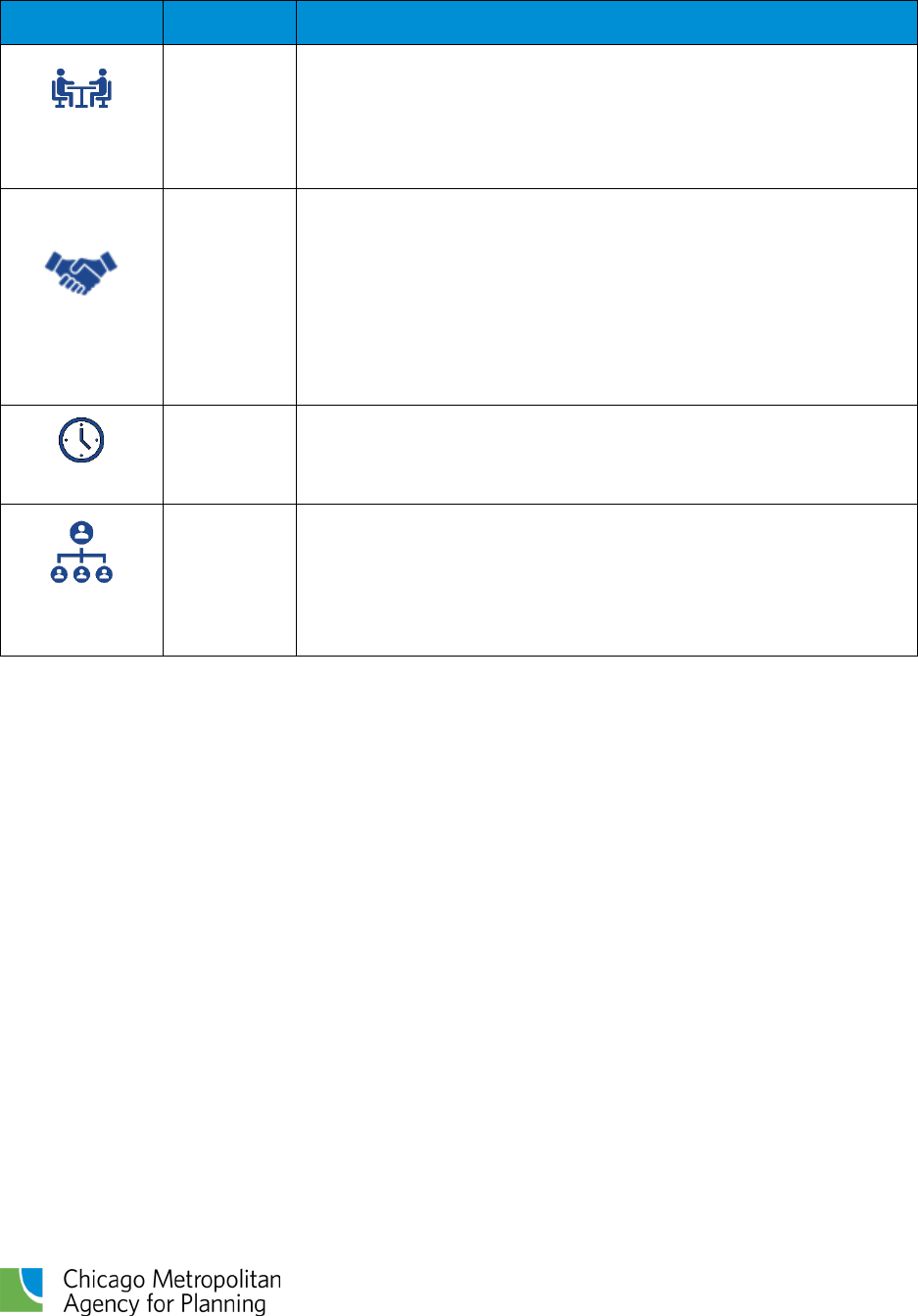
PART recommendations on
Page 8 of 24 roadway-generated revenues
Process
Category
Rating
Rationale
Administrative
feasibility
High
A regional MFT surcharge can easily be administered using
current mechanisms and distributed to the RTA/transit by the
state.
Political
feasibility
Medium
There is the potential for opposition to an increase to the MFT
on the heels of recent Rebuild Illinois adjustments to the rate.
Additional opposition may come from the proposed use of a
funding source that has traditionally been limited to capital
funding for transit operations. Nevertheless, support – and
statutory precedence – exists for using transportation
revenues to meet the need for transit funding.
Timing
Near
Given the ease of implementation, revenues from a MFT
surcharge could likely be realized by the end of 2025.
State span of
control
High
To enact a regional MFT, the ILGA would need to amend the
RTA Act provision that precludes the RTA from levying a
regional transit MFT alongside the existing RTA sales tax.
Implementation steps
State legislative action
The ILGA would need to amend the RTA Act provision that precludes the RTA from levying a
regional transit MFT alongside the existing RTA sales tax. Alternatively, the ILGA could levy a
regional surcharge that is administered at the state-level and direct the funds to RTA.
State agency action
Regardless of the legislative action taken, the Illinois Department of Revenue (IDOR) would
collect the revenues generated from the additional regional MFT rate and distribute the
regional share to the RTA to fund transit operations.
Challenges
Given that the state MFT was increased in 2019 and inflationary pressures have raised the price
of gasoline in recent years, it may be politically challenging to further add to the costs of motor
fuel.
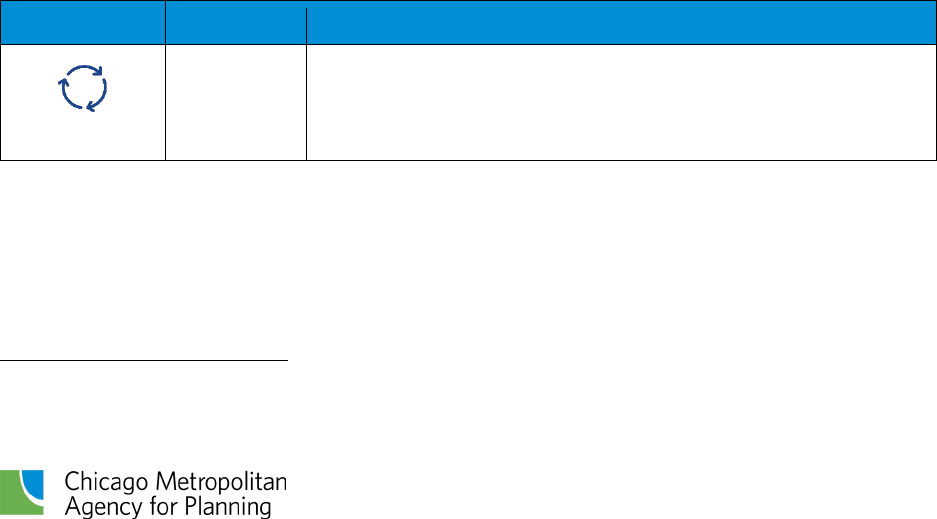
PART recommendations on
Page 9 of 24 roadway-generated revenues
Option 2: Impose a regional vehicle registration fee for
transit.
As previously noted, vehicle registration fees, or “wheel taxes,” are currently levied by the State
of Illinois, as well as county and municipal governments. Within northeastern Illinois, 159
municipalities impose vehicle registration fees on residents, ranging from $5-90 per vehicle. As
transportation user fees that increase the costs of driving and therefore encourage mode shift
to alternate forms of travel, registration costs have a strong nexus with the transit system and
could be used to provide direct support for transit.
In addition to modernizing the MFT, Rebuild Illinois also changed state motor vehicle
registration fees in 2019. As a result, the annual Illinois vehicle registration fee is a flat fee of
$151 per registered vehicle with electric vehicles paying an additional annual $100 surcharge
because they do not pay state motor fuel taxes. Registration costs in Illinois are considered
relatively high compared to some neighboring states, including Wisconsin, Indiana, and
Missouri, but are lower than others (Minnesota, Iowa, and Michigan).
f
Using historic vehicle
registration data and population forecasts, CMAP estimates the region could generate between
$60-70 million for transit operations from every $10 levied on top of the existing state fee.
Although Illinois is not the only state that imposes a flat registration fee (which is charged
regardless of vehicle value or income), this fee structure is more regressive than other state
fees that are calculated according to factors such as vehicle weight, value, and age (which are
more likely to correspond to a vehicle owner’s income and ability to pay). Were the vehicle
registration process modernized to assign costs according to vehicle characteristics, the system
could lead to more equitable taxation outcomes.
Evaluation
Policy
Category
Rating
Rationale
Mobility
Medium
Increasing vehicle ownership and operation costs in the RTA
region could encourage mode shift to transit and reduce
congestion.
f
States with lower registration costs might be coupled with higher registration costs at the municipal- or county-
level.
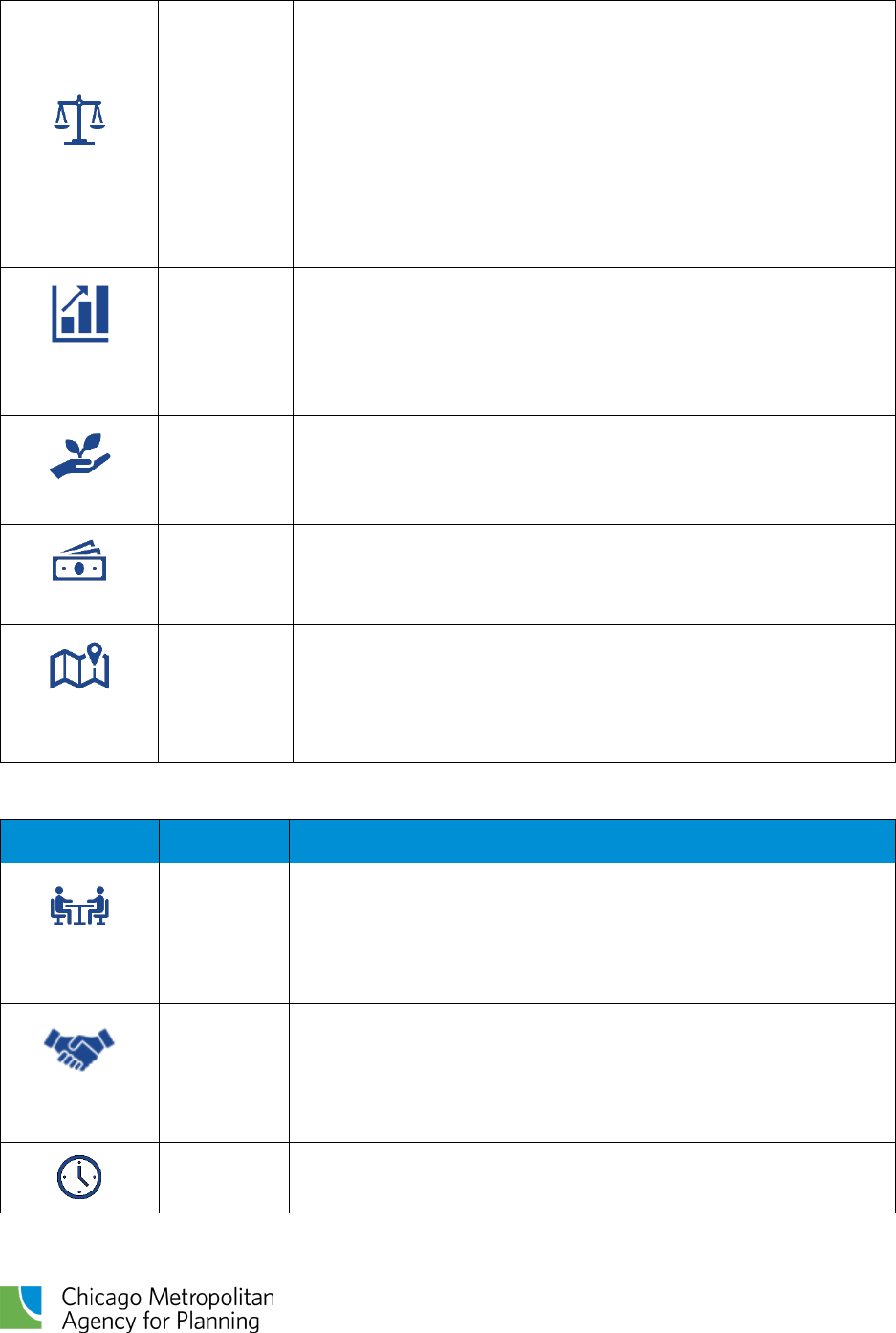
PART recommendations on
Page 10 of 24 roadway-generated revenues
Equity
Medium
While any increase to the state’s flat rate registration fee is
potentially regressive, the cost of vehicle registration will
remain a small share of the total cost of owning a vehicle,
which is itself significantly greater than the cost of traveling by
transit.
5
Additionally, lower-income households own fewer
vehicles than higher-income households, and therefore will
not be as negatively impacted by this option. As seen in other
states, registration solutions that assign costs to vehicle
characteristics could further reduce inequitable impacts.
Revenue
sustainability
High
A regional vehicle registration surcharge is likely sustainable in
the long-term, although the number of vehicle registrations in
the RTA region has declined slightly in recent years.
Environment
High
A regional vehicle registration surcharge will likely result in a
net reduction in greenhouse gas emissions because increasing
the cost of vehicle ownership incentivizes mode shift.
Economy
Medium
A regional vehicle registration surcharge is unlikely to have an
impact on economic growth.
Regional
benefit
Regional
The regional vehicle registration fee would increase the
region’s contributions to the overall transit funding strategy.
Process
Category
Rating
Rationale
Administrative
feasibility
High
A regional vehicle registration surcharge could easily be
administered under existing processes. Since registration fees
are collected by the state, funds would need to be distributed
to the RTA region.
Political
feasibility
Medium
The 2019 increases to the state vehicle registration fee may
make this option unpopular. Efforts to tie the registration fee
to factors such as vehicle weight, value, and age could reduce
some fees and improve political feasibility.
Near-term
Given the ease of implementation, revenues from a MFT
surcharge could likely be realized by the end of 2025.
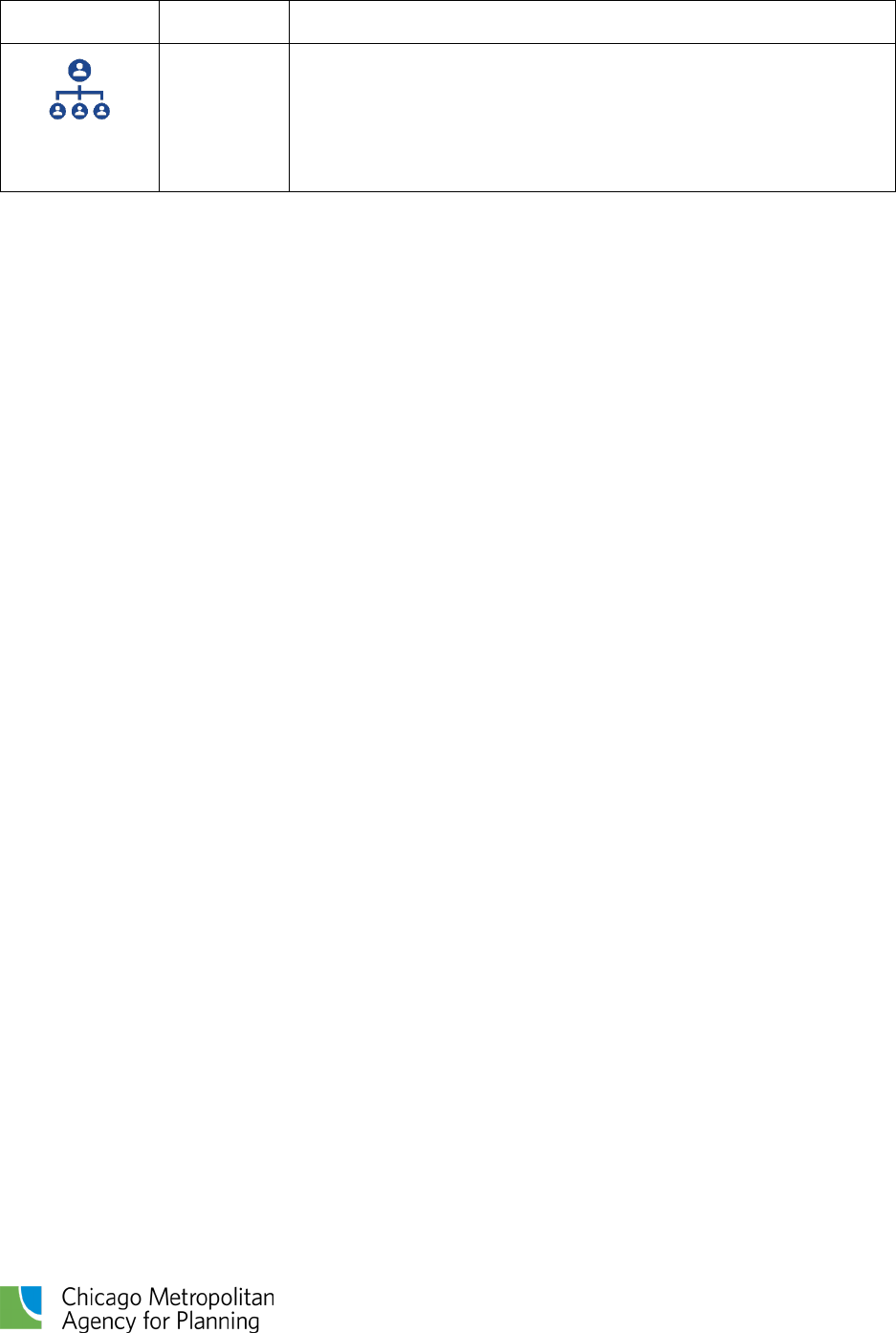
PART recommendations on
Page 11 of 24 roadway-generated revenues
Timing
State span of
control
High
The ILGA would be required to authorize this regional revenue
option by amending the RTA Act.
Implementation steps
State legislative action
The ILGA would need to authorize a regional vehicle registration fee for the RTA region and
could do so by amending the RTA Act. In doing this, the state should not preclude the use of a
motor vehicle registration fee alongside the RTA sales tax. Alternatively, the ILGA could levy a
regional registration fee surcharge administered by the state and directed to the RTA.
State agency action
Regardless of the legislative action taken, if implemented, the Secretary of State would need to
administer and collect both the state vehicle registration fee and RTA regional surcharge.
Incremental revenues for transit would need to be distributed to the RTA.
Challenges
Given that the state raised the vehicle registration fee in 2019, from $101 to $151, additional
increases may be politically challenging.
There are important equity implications for increasing a flat fee. To assuage concerns about
increasing the burden on vulnerable populations within the region, the state should explore
more equitable implementation options like calculating vehicle registration costs according to
the value, weight, or age of the vehicle.
Option 3: Increase parking taxes for transit.
There is a strong nexus between parking and transit, particularly in transit-rich areas. Taxing
commercial parking in targeted ways can incentivize users to shift from single-occupancy
vehicles to transit and other transportation alternatives (e.g., micromobility, active modes),
thereby reducing congestion and emissions. The City of Chicago, Cook County, and the State of
Illinois all already impose taxes on commercial parking in their respective geographies.
An additional commercial parking tax could be implemented in several ways. The monies could
be generated through either an increase to any of the existing tax rates or an additional flat fee
(e.g., $2.50 per parking transaction). Geographically, the increased cost could be levied across
the entirety of the RTA region, only within the Chicago central business district (CBD), and/or
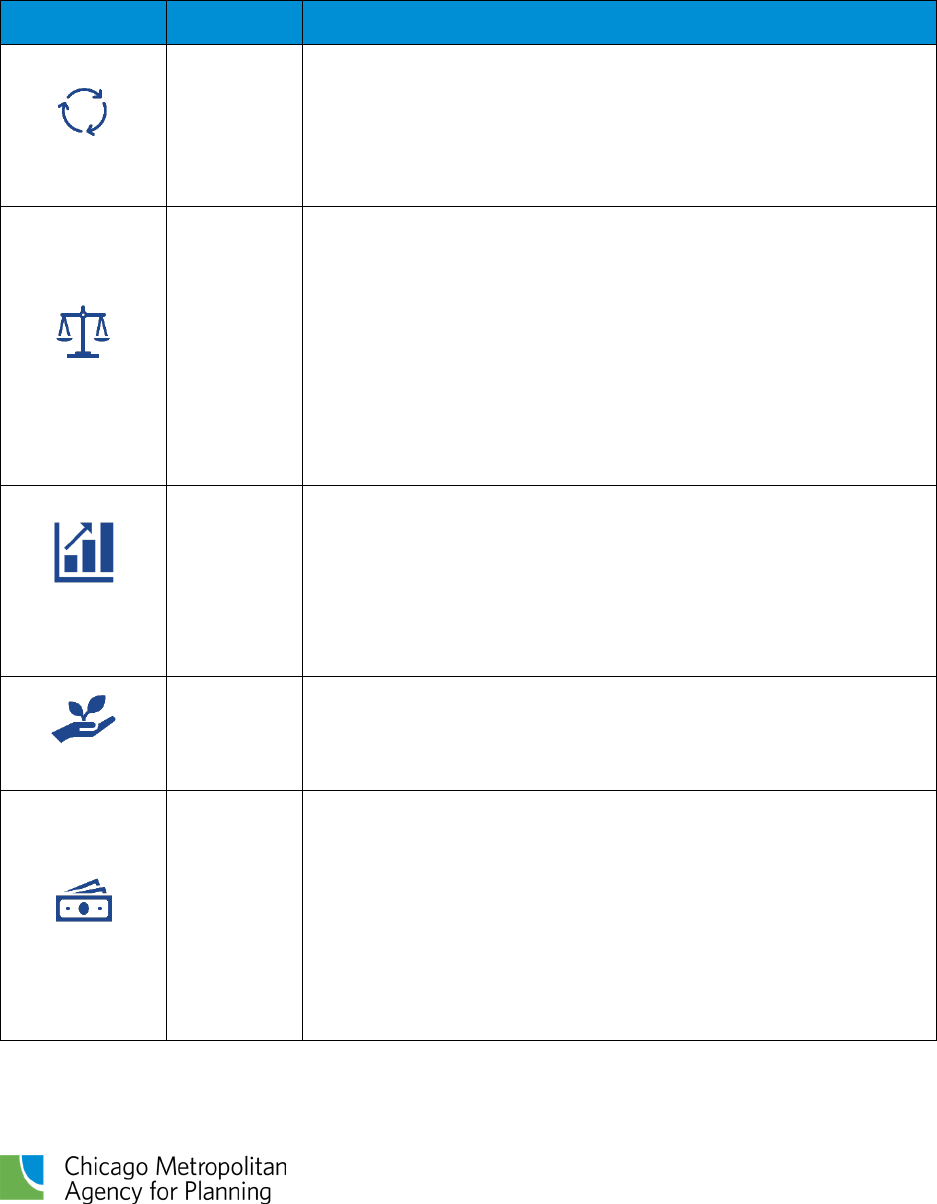
PART recommendations on
Page 12 of 24 roadway-generated revenues
other transit-rich areas, or a combination. A tiered rate or fee could be charged on parking
located within or outside of these designated geographies.
Evaluation
Policy
Category
Rating
Rationale
Mobility
High
Increasing the cost of parking has the potential to reduce
vehicular trips within and to areas with high concentrations of
commercial parking, like the Chicago CBD. This is expected to
shift some travelers to transit reducing congestion and driving
an increase in transit ridership.
Equity
Medium
Increasing the cost of parking does not account for ability to
pay and could unduly burden low-income drivers. However,
vulnerable populations are less likely to drive and park within
transit-rich areas like downtown Chicago, which shifts the
burden onto travelers with the ability to pay more for parking.
A tiered structure that imposes higher fees on designated
geographies based on transit availability than on other portions
of the region would improve the equity of outcomes.
Revenue
sustainability
Medium
A commercial parking tax has moderate revenue potential. For
example, rate increases that achieve 50% of Chicago’s
budgeted 2023 revenues could provide $60-70 million in
transit funding. At the same time, parking tax revenues from
the transit-rich areas like the CBD are also susceptible to
changing travel patterns and economic trends.
Environment
High
Mode shifts (from vehicular travel to transit) driven by
increased parking costs will have a net positive impact on
emission mitigation.
Economy
Medium
Decreased travel to transit-rich areas driven by increased
parking costs could impact businesses in the short-term.
Improved transit service is anticipated to offset these impacts.
Long-term, fewer cars in transit-rich and business-rich areas
would not only make them more friendly to users of active
transportation but may lead to more local tax revenue from
real estate appreciation and business activity.
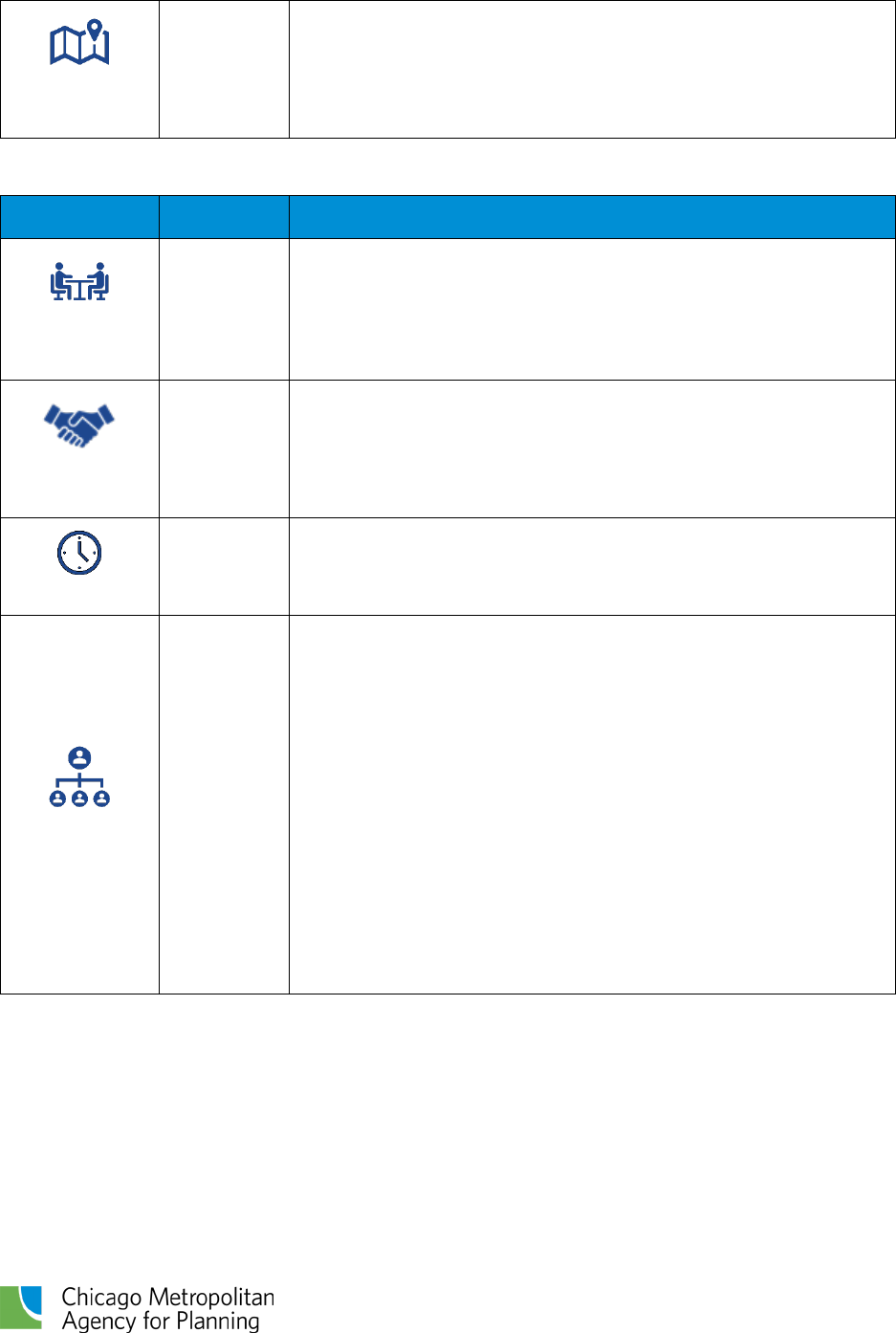
PART recommendations on
Page 13 of 24 roadway-generated revenues
Regional
benefit
Urban/
Regional
A parking tax for transit would increase the local and/or
regional contributions to the overall transit funding strategy.
Process
Category
Rating
Rationale
Administrative
feasibility
High
Increasing the commercial parking tax rate could leverage
existing implementation mechanisms.
Political
feasibility
Medium
Consensus building among stakeholders where this policy is
implemented would be required to advance additional tax on
commercial parking.
Timing
Near-term Revenues can be realized by the end of 2025.
State span of
control
Medium
An increase in commercial parking taxes could be implemented
several different ways. If desired, the state could maintain
control by increasing their own commercial parking tax and
dedicating incremental funds to transit. The ILGA could also
amend the RTA Act to remove the restriction regarding levying
a regional parking tax alongside the existing RTA sales tax and
to focus the regional tax on commercial facilities (rather than
public).
If not implemented by the state, a single entity (Cook County
or Chicago) should implement the additional commercial
parking tax to support transit and ensure consistent and
transparent application.
Implementation steps
Local action
The state, Cook County, and/or the City of Chicago would need to pass a rate increase or an
additional fee to their existing commercial parking tax to implement this proposal. Revenues
generated from the parking tax increase should be earmarked for funding transit operations.

PART recommendations on
Page 14 of 24 roadway-generated revenues
Challenges
The pandemic’s impact on travel behavior has called the long-term reliability of parking fees
into question. While some parking garages have benefitted from increased tourist activity,
remote work, among other issues, continues to impact overall usage of commercial parking
facilities and parking tax revenues have not yet surpassed pre-pandemic levels.
6
If these trends
continue, parking fees could further erode over time. This is especially true of the Chicago CBD,
which has the highest concentration of commercial parking in the region.
Changing the attractiveness of parking by imposing greater fees may ultimately depress the
availability of future parking fee revenues. However, the potential of mode shift to advance
many of the region’s broader policy goals related to congestion management and emissions
reduction – while also providing revenues for transit – should be thoroughly considered when
weighing tradeoffs.
Option 4: Increase existing tolls and dedicate a portion
of the increment to transit.
The Illinois State Toll Highway Authority, or “Illinois Tollway”, is the agency charged with
building, operating, and maintaining toll roads in the state. Compared to roadways that are
operated by IDOT and local county and municipal transportation departments, which rely on
federal, state, and local monies to fund maintenance and operations, the Illinois Tollway
primarily relies on toll revenues collected from its own system. These toll revenues are used to
fund operations, such as Tollway staff costs, snow and ice control, and traffic monitoring and
incident response. Toll revenues are also used to fund the Tollway’s capital expenditures, which
include roadway reconstruction, expansion, and systemwide maintenance. While some toll
revenues fund capital costs directly, the Tollway’s multi-year capital programs – such as their
current 15-year, $14 billion capital program, Move Illinois – are largely funded by proceeds from
bonds that are secured by future toll revenues.
The toll fees upon which the Tollway relies are, in their essence, a true user-based fee: some
users choose to pay for access to faster or more direct routes (tollways), while others choose
alternate routes or means of travel (i.e., non-tolled roadways or transit). Accordingly, tolls serve
an important system demand management role by imposing the true cost of vehicle trips on
drivers using certain roadway assets, incentivizing mode shift and transit ridership, and
reducing congestion. Increasing the cost of tolls would advance these regional priorities and
could be used to provide a sustainable revenue source for transit operations.
If desired and directed by the state, the Illinois Tollway could dedicate a portion of its revenues
to transit, which could be funded by increasing tolls. Increasing tolls by 30% within the RTA
region is estimated to generate an additional $450 million in annual revenue. This revenue
estimate includes increasing tolls paid by freight trucks, which are currently indexed to the
Consumer Price Index (CPI) and adjusted on an annual basis. In general, trucks already shoulder
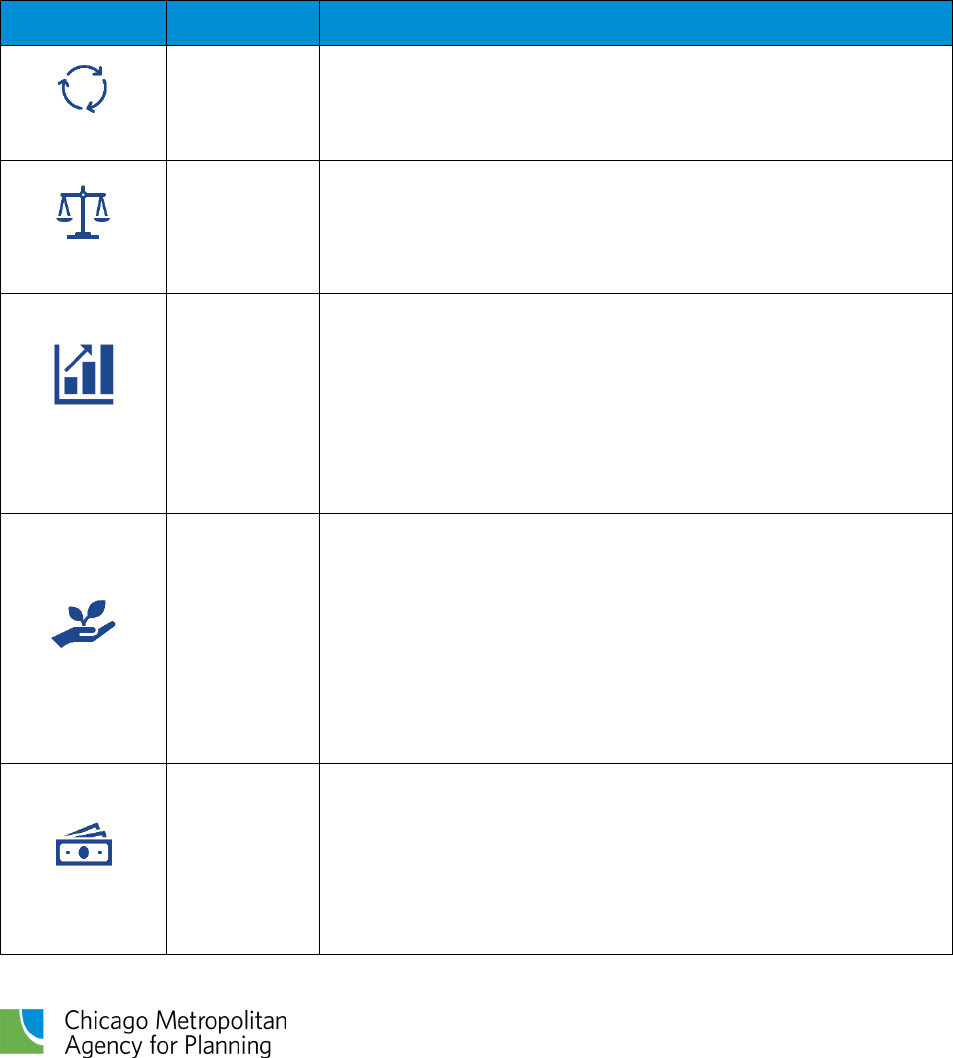
PART recommendations on
Page 15 of 24 roadway-generated revenues
a disproportionate share of the costs imposed through tolling and the nexus between
commercial vehicles and transit is less straightforward. Therefore, while it is important to
ensure freight trucks continue to pay for their use of the tollways, excluding trucks from a toll
increase for transit would reduce the estimated annual revenues to $180 million. The Illinois
Tollway may consider an initial increase in passenger car rates to bring passenger car and
freight truck rates into better proportion. This could be followed by an annual CPI adjustment
to the rates for passenger cars to maintain future parity with trucks.
Evaluation
Policy
Category
Rating
Rationale
Mobility
Medium
Increasing the costs of operating a vehicle in the RTA region
could help manage congestion on the existing interstate
system and better reflect the true cost of roadway use.
Equity
Medium
Increasing tolls is expected to have a marginal impact on
vulnerable travelers because tolls are not a substantial share of
transportation costs, and higher-income households contribute
a larger share of toll revenues than lower-income households.
7
Revenue
sustainability
High
Toll revenues are stable, and increased tolls have strong
revenue potential in the region. Changes in future tollway
revenues from currently tolled assets could impact the
Tollway’s credit rating and/or bond financing. Accordingly, any
discussions about use of toll revenues from the Tollway system
should include in-depth consultation and partnership with the
Illinois Tollway.
Environment
High
Increasing tolls may result in reductions in greenhouse gas
emissions. While tolls are not a substantial share of
transportation costs, increases will contribute to the overall
cost of driving and may result in some mode shift toward
transit or canceled trips. Some drivers may choose to divert to
local roads, highlighting the long-term importance of a
consistent, comprehensive approach to regional road pricing
(see Option 5 below).
Economy
Low/Medium
Increasing tolls for trucks could further burden freight and
other related industries that transport goods and materials
within and through the region, which could negatively impact
economic growth. If trucks are excluded from increased tolls,
this option will not have as direct an impact on economic
growth.
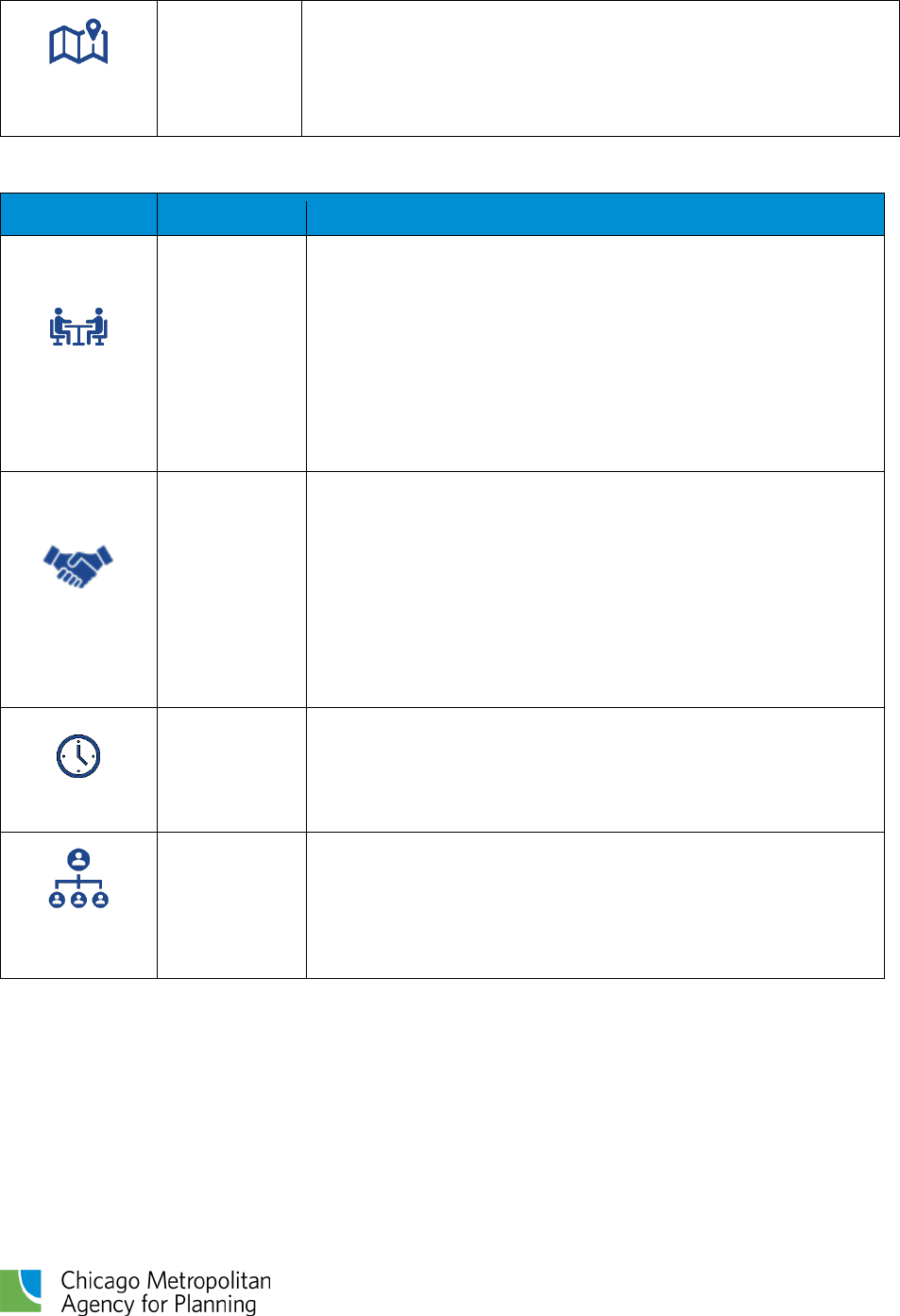
PART recommendations on
Page 16 of 24 roadway-generated revenues
Regional
benefit
Regional
Additional revenue generated from a toll increase would add
to the region’s contributions to the overall transit funding
strategy.
Process
Category
Rating
Rationale
Administrative
feasibility
High
The Illinois Tollway has the authority to increase tolls and
can rely upon existing toll collection infrastructure. Further
examination of Tollway’s Trust Indenture is required to
better understand the terms in which toll revenue can be
used to support transit. Additional administrative support
will likely be needed by the Illinois Tollway and Illinois
Department of Revenue (IDOR) to facilitate the collection
and distribution of funds for transit.
Political
feasibility
Medium
There would likely be opposition to increasing tolls on freight
trucks but may be some support for increasing tolls on
passenger vehicles given the relatively flat growth of those
rates over time. Tolls could be increased via an Illinois
Tollway Board vote or, if necessary, statutory mandate,
contingent funding, or some other legislative means. The
ILGA would be required to direct a portion of toll revenues to
the RTA region.
Timing
Near-term
Given that the increase relies exclusively on existing capital
infrastructure and revenue collection mechanisms, this
option could be implemented quickly, potentially yielding
additional revenues by the end of 2025.
State span of
control
Medium
While the Illinois Tollway would implement any decision to
increase tolls in the RTA region, the action would require the
ILGA to direct the Illinois Tollway to dedicate a portion of toll
revenues to the RTA region.
Implementation steps
State legislative action
The Illinois Tollway has the authority to increase tolls by itself, but the ILGA would need to
direct the Tollway to dedicate a portion of toll revenues to transit in the RTA region.
State agency action

PART recommendations on
Page 17 of 24 roadway-generated revenues
The Illinois Tollway Board would likely need to vote to increase tolls, unless otherwise
mandated by the ILGA.
Challenges
Given that toll revenues have already been used to secure bond financing for the Illinois
Tollway, increasing toll fees and dedicating tollway revenues to another use (i.e., transit) may
negatively impact the Tollway’s credit ratings. This could impact both their current financing – if
bondholders consider the toll increases risky – and their ability to access financing at favorable
interest rates in the future. Further exploration of this option would benefit from an Illinois
Tollway assessment of its potential impact. Any increases in tolls and diversion of funds to
support transit should be implemented in collaboration with the Tollway to minimize any
negative externalities.
Option 5: Add tolls on existing IDOT expressways within
the RTA region and dedicate a portion of the increment
to transit.
Instead of increasing existing tolls, tolling could be expanded to all the IDOT expressways within
the RTA region that are not currently tolled. Comprehensively expanding tolling to all facilities
would provide the greatest congestion management and revenue generation benefits for the
region, but managed lane and variable pricing strategies could also be considered.
g
Accordingly,
modeling that applies a toll rate of $0.15-0.20 per mile of freeway in the RTA region indicates
this option could raise an additional $1.7 billion in gross annual revenue.
h
The vast majority of revenues generated by tolling the existing IDOT system would need to be
dedicated to rebuilding those facilities over the next thirty years. To support the billions of
dollars needed to reconstruct these aging assets, the region’s Financial Plan for Transportation
identifies tolling IDOT expressways that have been targeted for reconstruction as a “reasonably
expected revenue.”
8
That said, opportunities exist in expanding tolling to introduce an
additional increment that can generate consistent, reliable funding for transit while also
advancing the region’s expressway state of good repair needs.
Currently, tolls are imposed in parts of the RTA region where few alternatives to driving exist.
Conversely, transit-rich areas within the region have fewer tolls, are more likely to experience
congestion, and are in built-up environments where additional roadway expansion poses
significant challenges. Tolling expressways in transit-rich parts of the region (such as the
expressways within Chicago and Cook County (e.g., Interstate 90/94)) would incentivize mode
g
Additional work is needed to determine the costs and benefits of these alternative congestion mitigation
strategies.
h
The $0.15-0.20 per mile input is based on the current toll rate for Illinois Route 390, instead of the Tollway
average, which is $0.06 per mile.
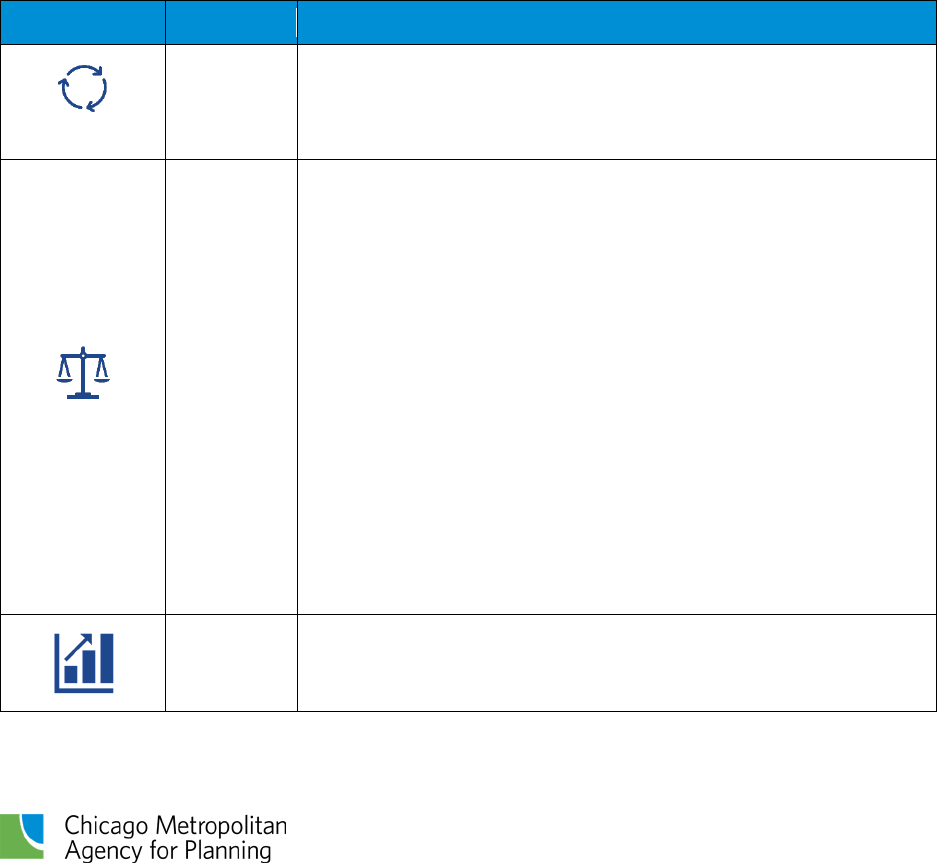
PART recommendations on
Page 18 of 24 roadway-generated revenues
shift to transit, advance congestion management across the highway system, and reduce the
greenhouse gas emissions attributable to the transportation system.
Likewise, expanding tolling in areas of the region that experience high levels of truck congestion
would improve travel times for all users of the roadway system while generating funds to
support the state of good repair needs across the region. Finally, working to ensure parallel
transit service (e.g., Pace’s Bus on Shoulder program) is made available for newly tolled facilities
located in transit-poor areas of the region will be critical to support a coordinated tolling
system that more accurately matches the transportation alternatives available to travelers with
the costs of driving in the region.
Additionally, depending on the nature of the physical and technological investments made, the
tolling system could be sufficiently flexible to adapt to future travel patterns and allow the state
to enact a form of congestion pricing on certain IDOT regional infrastructure.
Evaluation
Policy
Category
Rating
Rationale
Mobility
High
Increasing the cost of driving on highways throughout the
region would reflect the true cost of road use, encourage
transit ridership, and reduce congestion.
Equity
Medium
Adding new tolls is expected to have a marginal impact on
vulnerable travelers. In general, tolls are not a substantial share
of the cost of driving and are less regressive than other existing
transportation revenue sources that rely on motor vehicle fuel
efficiency and flat fees (i.e., motor fuel taxes and vehicle
registration fees). Additionally, higher-income households
contribute a larger share of toll revenues (and peak-period
travel) than lower-income households.
9
Nevertheless, tolling IDOT’s radial facilities would introduce a
more diverse customer base than the Tollway’s current users.
Any discussions about expanding tolling should include in-depth
consultation and partnership with the Illinois Tollway, as well as
support to advance equity and limit negative impacts to the
most vulnerable users.
High
The revenue potential from new tolls is strong, and it would
likely be a stable revenue source.
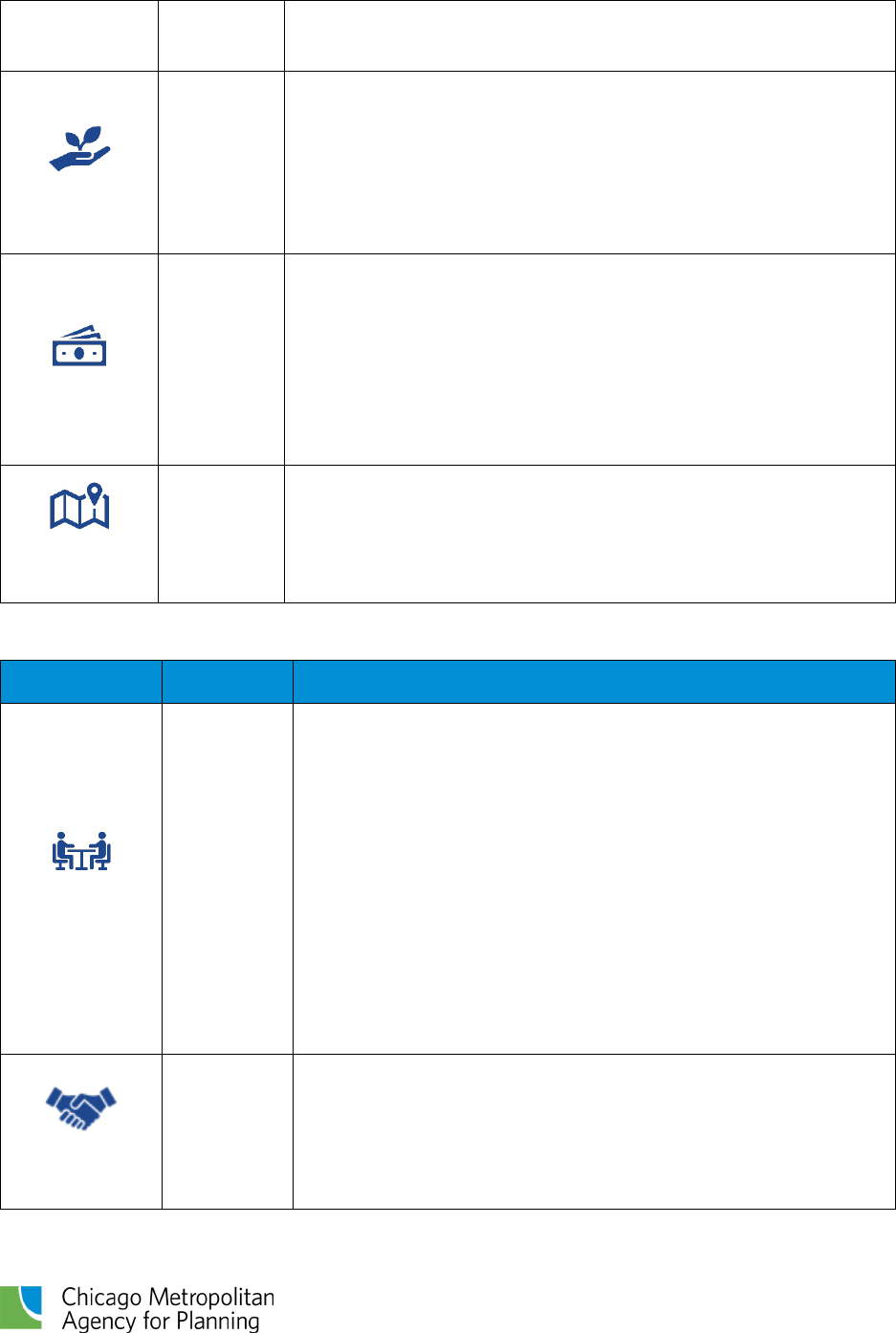
PART recommendations on
Page 19 of 24 roadway-generated revenues
Revenue
sustainability
Environment
High
New tolls will result in a moderate reduction in greenhouse gas
emissions. Increasing the cost of driving may contribute to
mode shifts toward transit and other non-car modes, while
improvements in congestion management will reduce
greenhouse gas emissions from those users that continue to
drive.
Economy
Medium
The short-term economic impact of expanding tolling is
dependent on the rate at which commercial and private users
are tolled.
The longer-term economic impact of tolling IDOT expressways
is expected to be high as it enables the rebuilding the existing
facilities and substantially support transit.
Regional
benefit
Urban/
Regional
Additional revenue generated from new tolls would increase
the region’s contributions to the overall transit funding
approach.
Process
Category
Rating
Rationale
Administrative
feasibility
Medium
A tolling services agreement between IDOT and the Illinois
Tollway would be needed to ensure that the Tollway’s back-
office could support toll collection on IDOT’s facilities.
Assuming the necessary capital infrastructure can be funded
and installed, new tolls could then be collected by existing
tolling technology and systems.
Waivers may need to be secured from the federal government
to authorize tolling on IDOT expressways. Any approach to
expanding tolling on these roads would require coordination
between state, regional, and federal agencies.
Political
feasibility
Low
Adding tolls to currently untolled assets would shift how
travelers move through the region and would likely face
opposition from existing users. However, within the current
system, most of the untolled assets are in areas with greater
transit access.
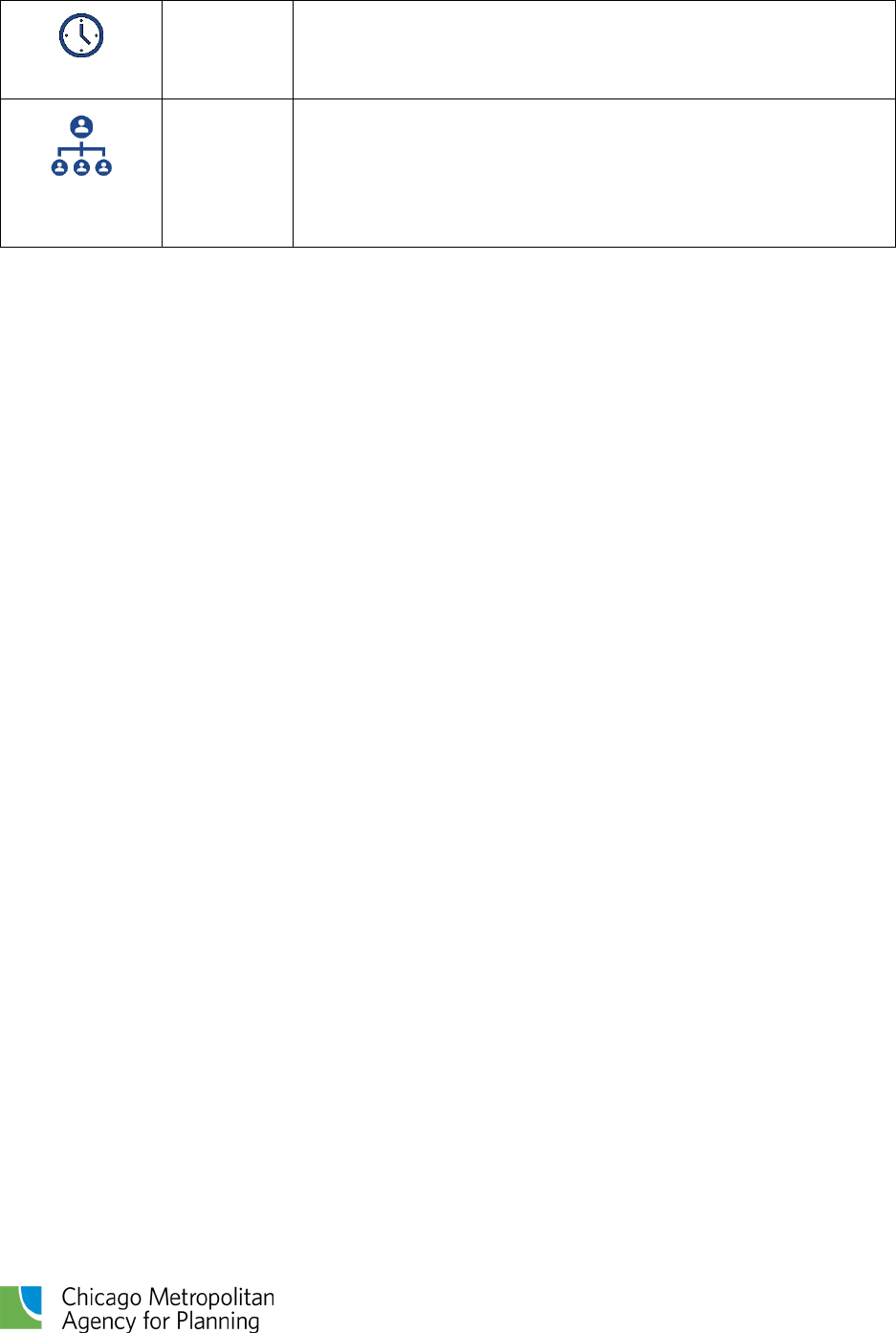
PART recommendations on
Page 20 of 24 roadway-generated revenues
Timing
Long-term
Significant capital infrastructure investments are needed to
implement this option. Revenues would not be recognized for
some time.
State span of
control
Medium
The federal government would need to allow IDOT to add tolls
to toll-free assets. These waivers require state support, and
state agencies (IDOT, Illinois Tollway) would need to
coordinate to successfully expand tolling.
Implementation steps
State agency action
IDOT and the Illinois Tollway would implement the toll expansion, if the federal government
provides an exception to existing regulations that prohibit adding tolls to untolled assets. IDOT
and the Tollway would need to be directed to develop a tolling services agreement for the
Tollway to provide back-office services to IDOT.
Challenges
Adding tolls to untolled assets is currently only permitted by the federal government on a
limited basis. To implement this option, the federal government would need to provide an
exception to the region and could consider the region for a pilot program such as the Value
Pricing Pilot Program (VPPP).
10
Option 6: Levy cordon pricing in the Chicago CBD
Cordon pricing is a congestion management and road pricing strategy that imposes a fee on
vehicles entering a defined geographic boundary. Cordons tend to be implemented in CBDs
where vehicle congestion is high, air quality is a concern, and transit is an available alternative.
Implementing cordon pricing in the Chicago CBD provides an opportunity to account for the
negative impacts imposed by driving on the area, like increased congestion, and decreases in
both air quality and traffic safety. At the same time, cordon pricing incentivizes travelers to
mode shift to other means of travel. The Chicago CBD is a strong candidate for cordon pricing
because of its robust transit network, which provides travelers with various low-cost
transportation alternatives through walking, biking, taxi, urban bus and rail (i.e., CTA), or
commuter rail (i.e., Metra). Figure 1 shows the Chicago Downtown Surcharge Zone that was
used by CMAP for modeling purposes, which was previously studied by the City of Chicago.
Modeling results show that cordon pricing would generate significant revenue. Based on
cordon pricing characteristics from New York City and London, CMAP estimates annual
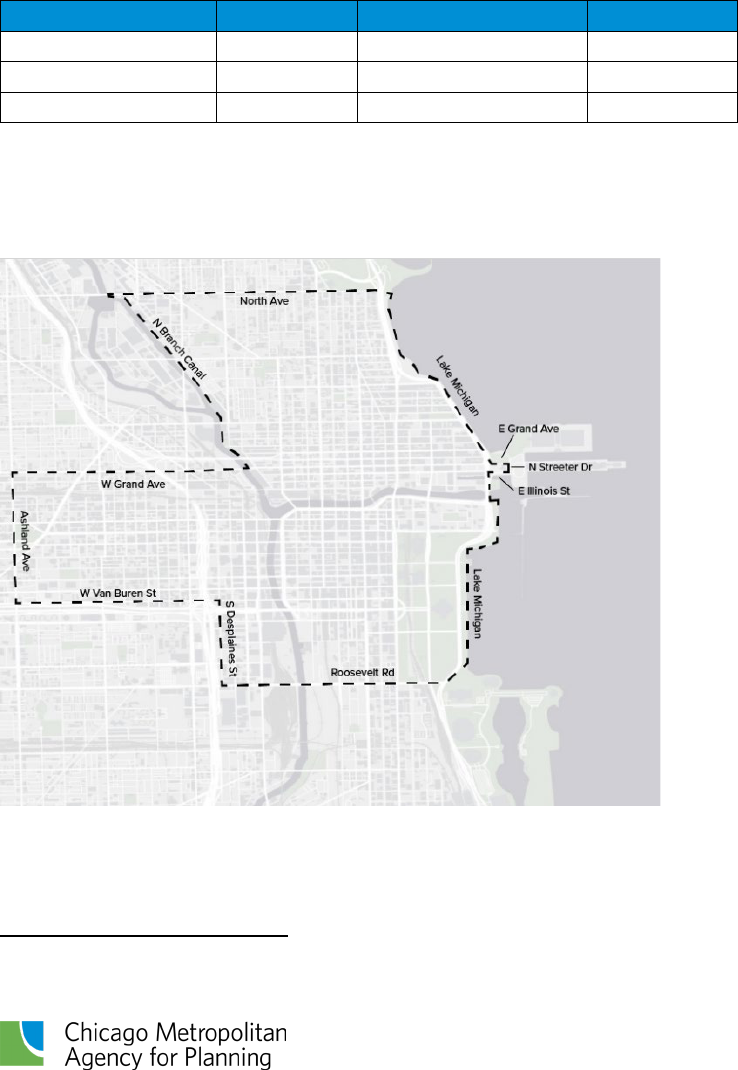
PART recommendations on
Page 21 of 24 roadway-generated revenues
revenues of $765 million for a low-fee scenario (comparable to New York City) and $1.3 billion
for a high-fee scenario (comparable to London), beginning in 2030.
i
If it were to be imposed, the cordon would always be in effect, including on weekends, but the
fee could vary by time of day. The fee could also differ by vehicle type (e.g., passenger vehicle,
light- or medium-duty truck, heavy-duty truck). As recommended, crossing the cordon during
peak weekday times costs the most, followed by off-peak weekday times, and then overnight
on weekdays. Table 3 shows cordon charges from the low-fee scenario. The modeled cordon
applied to city roadways in the central business district but not to the highways (Figure 1).
Table 3: Cordon charges could vary based on vehicle type and time of weekday.
Time of day
Automobile
Light/medium trucks
Heavy trucks
Peak weekday
$9
$18
$27
Off-peak weekday
$7
$14
$21
Overnight weekday
$5
$10
$15
Source: CMAP analysis of low-fee scenario, based on draft New York City cordon rates.
Figure 1: The modeled boundary for cordon pricing in the Chicago central business district is
based on the Chicago’s current downtown surcharge zone for Transportation Network
Companies (TNCs).
Source: City of Chicago
i
As modeled, revenues are only collected from drivers entering the cordon, not passing through on interstates.
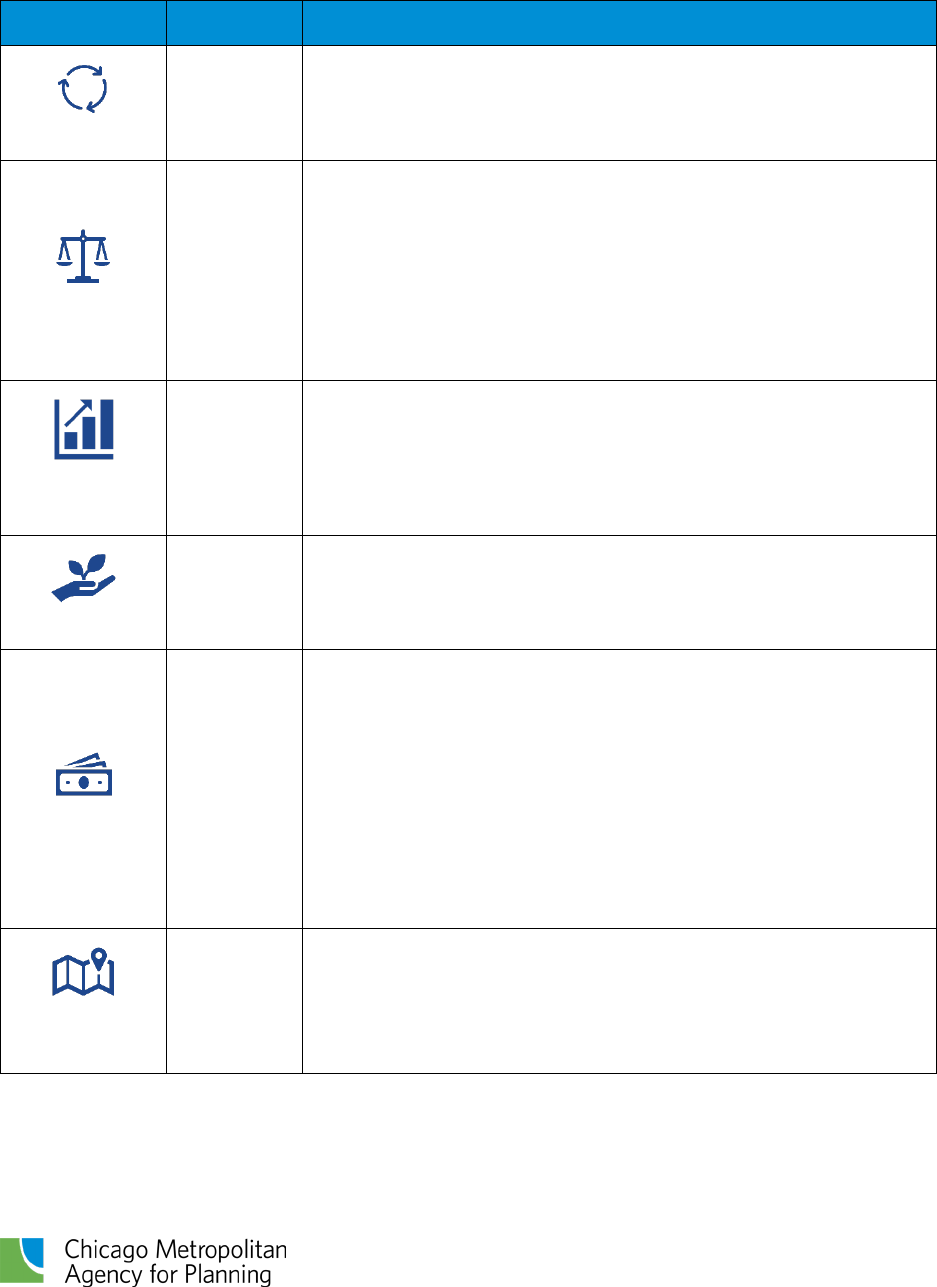
PART recommendations on
Page 22 of 24 roadway-generated revenues
Evaluation
Policy
Category
Rating
Rationale
Mobility
High
Cordon pricing incentivizes travelers to mode shift to transit for
those trips ending within the cordon, instead of driving. This
would encourage transit ridership and reduce congestion.
Equity
High
A new fee could have some negative equity impacts, although
vulnerable populations are more likely to take transit and
travel during off-peak periods. While it was not included in the
modeling, implementers could consider providing income-
based waivers to residents and/or discounts to employers for
low-wage essential staff (i.e., janitorial staff)
to further mitigate
the impacts of a CBD cordon.
Revenue
sustainability
High Cordon pricing is projected to have a significant revenue yield.
Environment
High
Cordon pricing discourages vehicle trips, therefore reducing
vehicle miles traveled and emissions.
Economy
Medium
A CBD cordon is unlikely to have an impact on economic
growth. Reduced vehicle trips might result in fewer total trips
to the CBD, but improved transit service will offset these
impacts.
Long-term, fewer cars in transit-rich and business-rich areas
would not only make them more friendly to users of active
transportation but may lead to more local tax revenue from
real estate appreciation and business activity.
Regional
benefit
Urban/
Regional
Additional revenue generated from a CBD cordon would
increase the City of Chicago’s contributions to the overall
transit funding strategy.
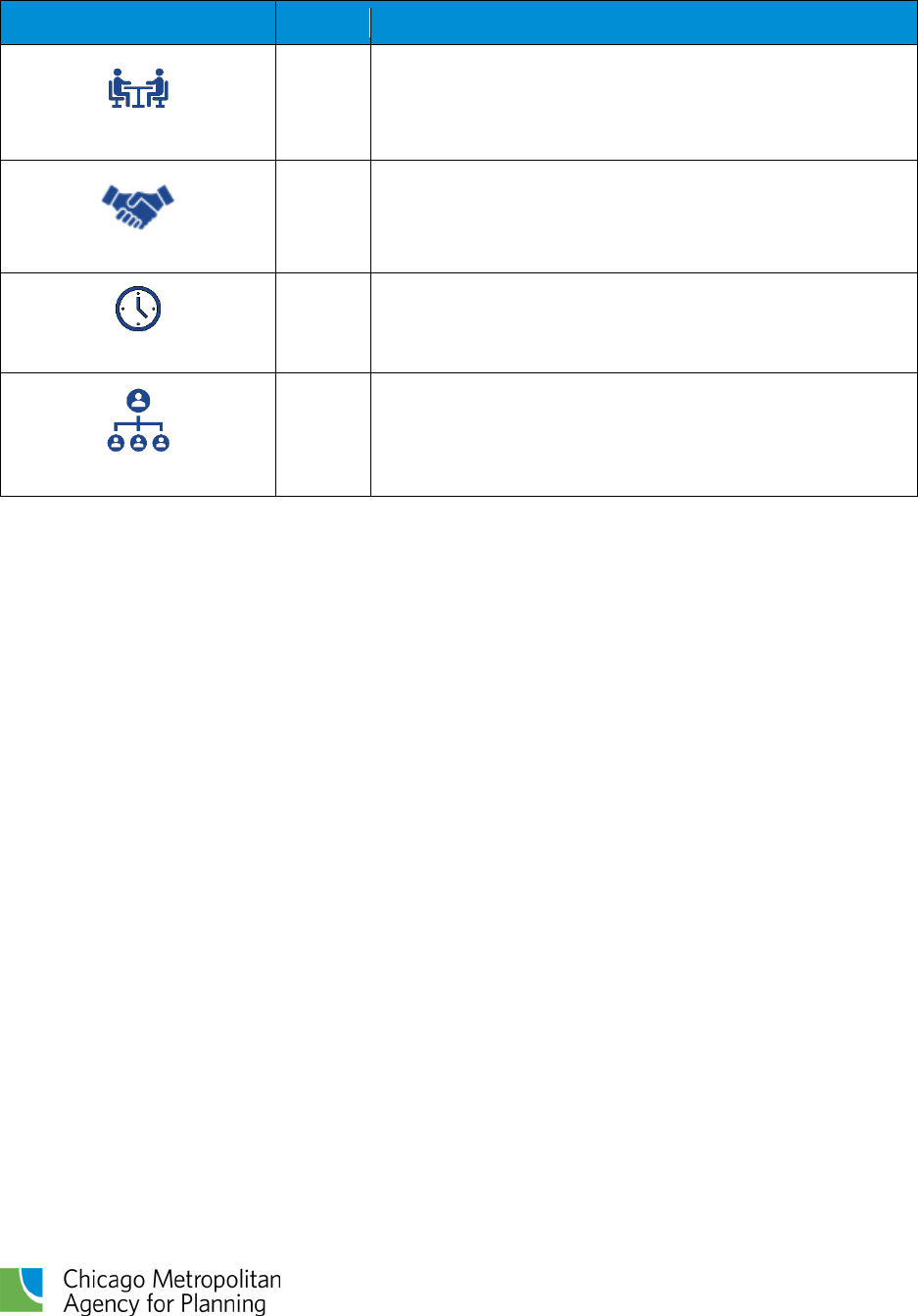
PART recommendations on
Page 23 of 24 roadway-generated revenues
Process
Category
Rating
Rationale
Administrative feasibility
Low
A cordon would require a new collection mechanism
and administrative capacity.
Political feasibility
Low
A cordon is a
new and different transportation user fee,
which will likely be met with opposition.
Timing
Low Implementation is unlikely until 2030.
State span of control
Medium
Cordon pricing requires authorization from the ILGA
and coordination with state agencies.
Implementation steps
State and regional action
Cordon pricing requires authorization from the ILGA. Implementation will require coordination
from several agencies, including IDOT, the Tollway, the Chicago Department of Transportation,
among others. The charge could ultimately be operated by a public entity such as the Chicago
Department of Transportation or through a public-private partnership, as in London.
Challenges
Implementing cordon pricing requires significant capital investments to charge vehicles
entering the cordon. Tolling infrastructure would be required around the cordon.
Some travelers could change their travel patterns if a cordon is implemented. Distorted travel
patterns could mean increased vehicle miles traveled, as drivers take longer routes to avoid the
cordon boundary. Improving infrastructure that enables faster and more reliable movement
into and throughout the cordon area for transit users, cyclists and pedestrians could mitigate
this challenge.
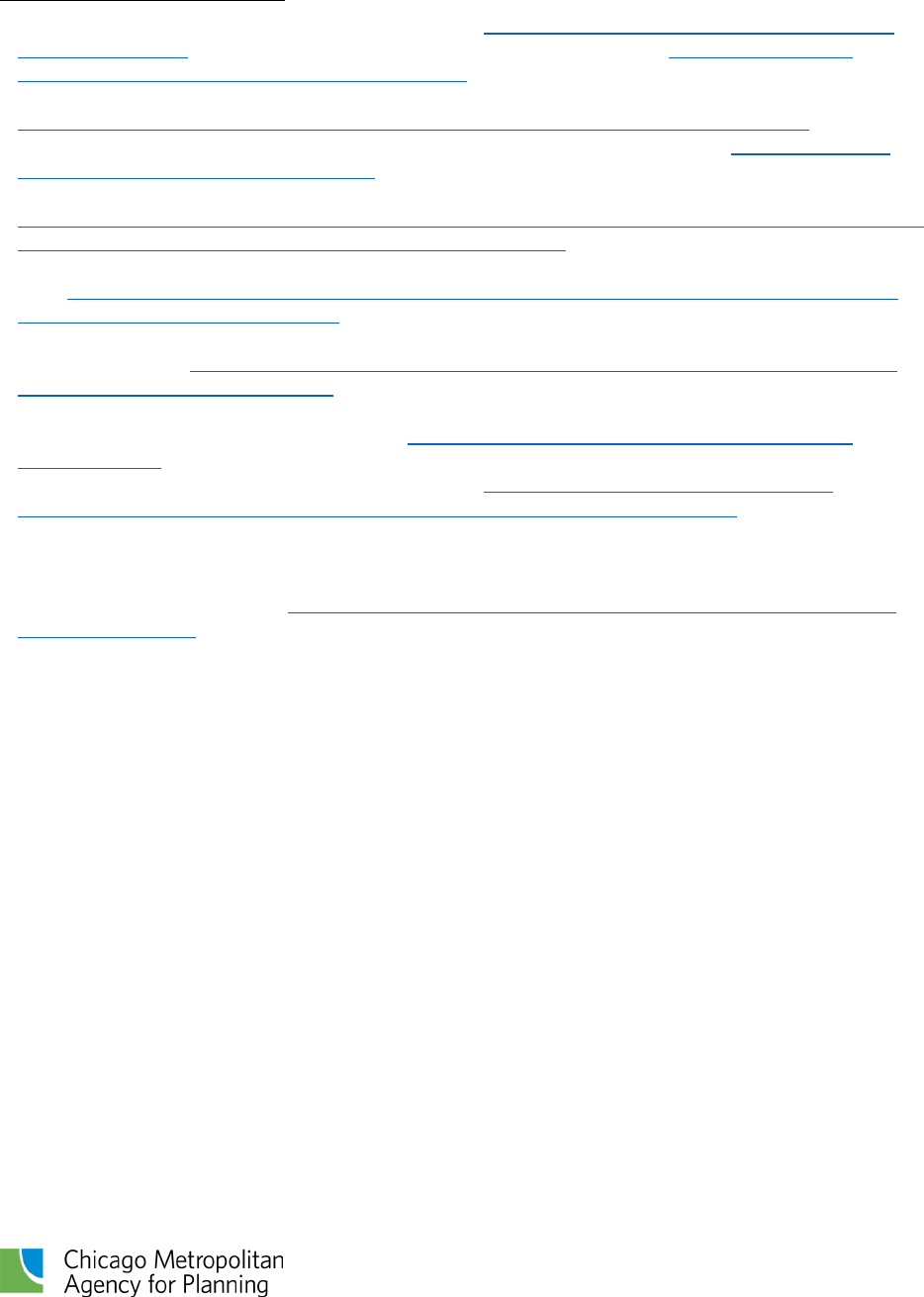
PART recommendations on
Page 24 of 24 roadway-generated revenues
Endnotes
1
Cook County, “Parking Lot & Garage Operation Tax,” n.d., https://www.cookcountyil.gov/service/parking-lot-
garage-operation-tax; Illinois Department of Revenue, “Parking Excise Tax,” n.d., https://tax.illinois.gov/
research/taxinformation/excise/parking-excise-tax.html.
2
City of Chicago, “Parking Tax,” n.d.,
https://www.chicago.gov/content/city/en/depts/fin/supp_info/revenue/tax_list/parking_tax.html
.
3
Chicago Metropolitan Agency for Planning (CMAP), “Plan of Action for Regional Transit,” https://www.cmap.
illinois.gov/programs/regional-transit-action.
4
CMAP, “Plan of Action for Regional Transit Steering Committee,”
https://www.cmap.illinois.gov/documents/10180/1523087/PART+Steering+Committee+07.19.2023+presentatio
n.pdf/cc5d51d1-c34d-9634-9dd8-00543e7905d8?t=1689870006294.
5
Chicago Metropolitan Agency for Planning, “Improving Equity in Transportation Fees, Fines, and Fares,” April
2021,
https://www.cmap.illinois.gov/documents/10180/1307930/FFF_final_report.pdf/1d74b660-c1c3-a2c0-
dcb0-879d4493a499?t=1617741942903.
6
Alby Gallun, “The Car’s Comeback Is Easing Downtown Parking Garages’ Pain,” Crain’s Chicago Business,
September 24, 2021,
https://www.chicagobusiness.com/commercial-real-estate/downtown-chicago-parking-
garages-gain-customers-cta-metra-lose.
7
U.S. Department of Transportation, Federal Highway Administration, “Income-Based Equity Impacts of
Congestion Pricing—A Primer,” March 26, 2021,
https://ops.fhwa.dot.gov/publications/fhwahop08040/
cp_prim5_03.htm.
8
CMAP, “Financial Plan for Transportation,” October 2022, https://www.cmap.illinois.gov/documents/
10180/1439048/ON+TO+2050+Update+Financial+Plan+for+Transportation+Appendix.pdf.
9
U.S. Department of Transportation, Federal Highway Administration, “Income-Based Equity Impacts of
Congestion Pricing—A Primer.”
10
U.S. Department of Transportation, Federal Highway Administration, “Federal Tolling Programs,” Center for
Innovative Finance Support, n.d.,
https://www.fhwa.dot.gov/ipd/tolling_and_pricing/tolling_pricing/federal_
tolling_programs.aspx.
